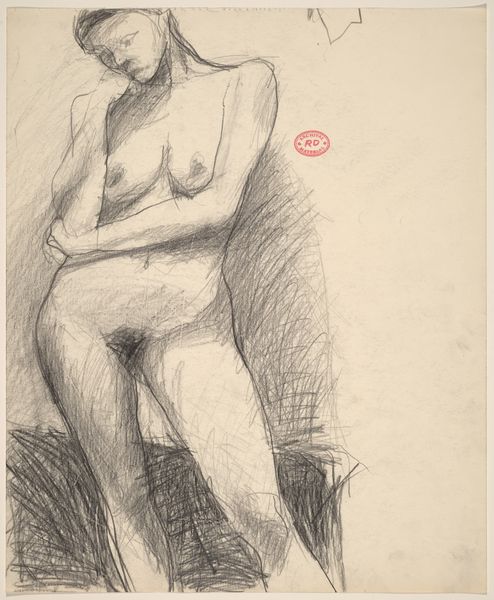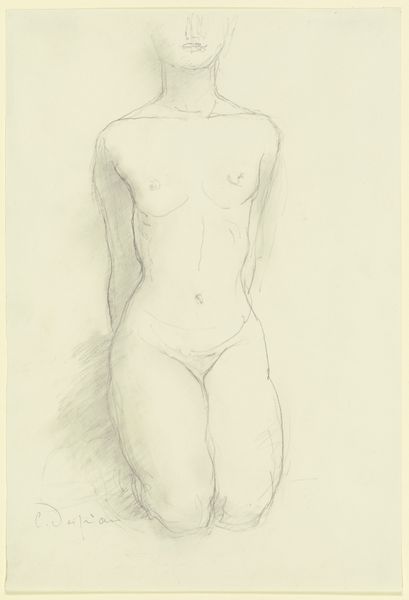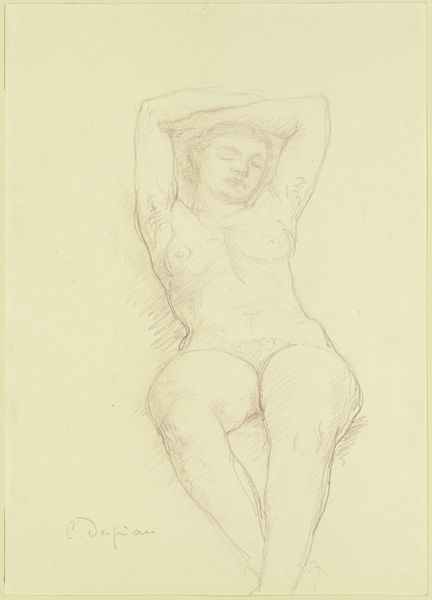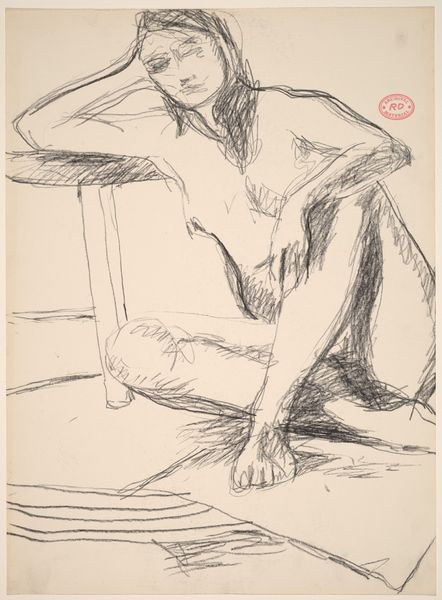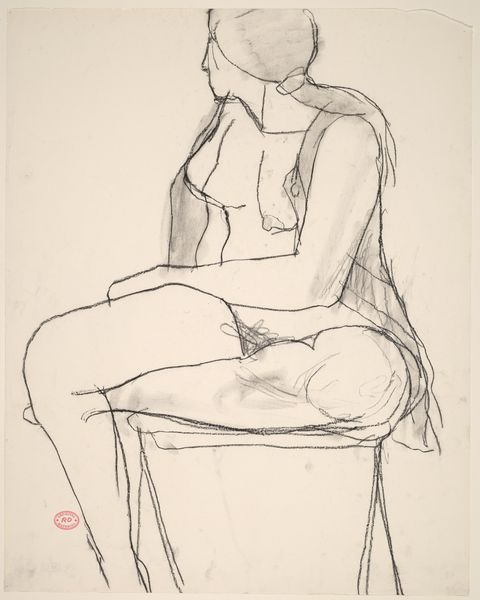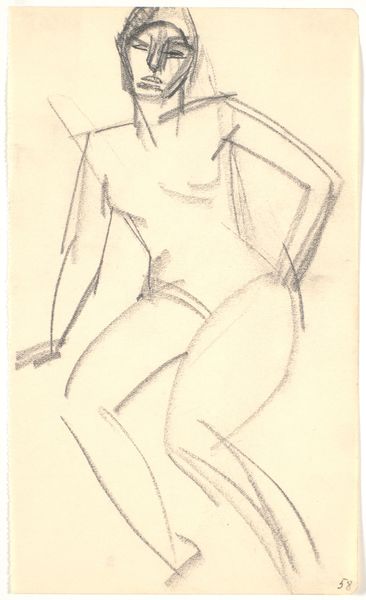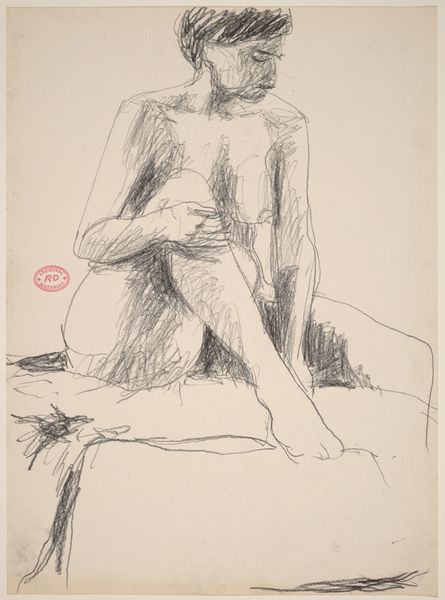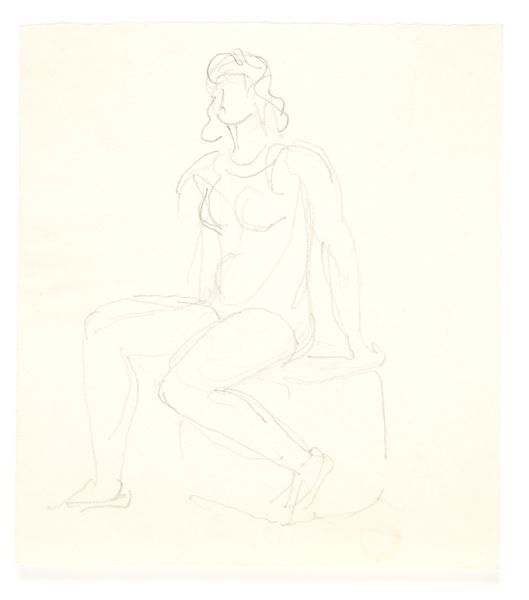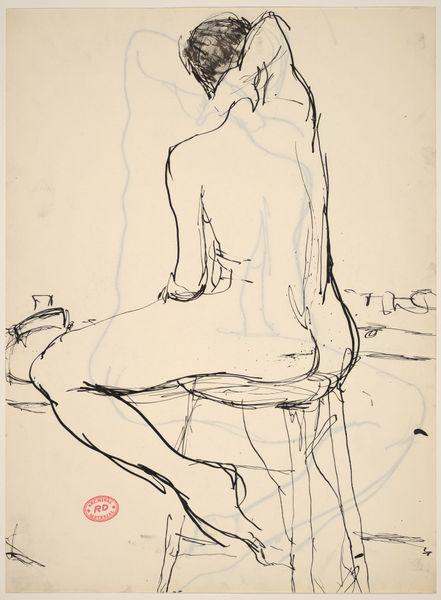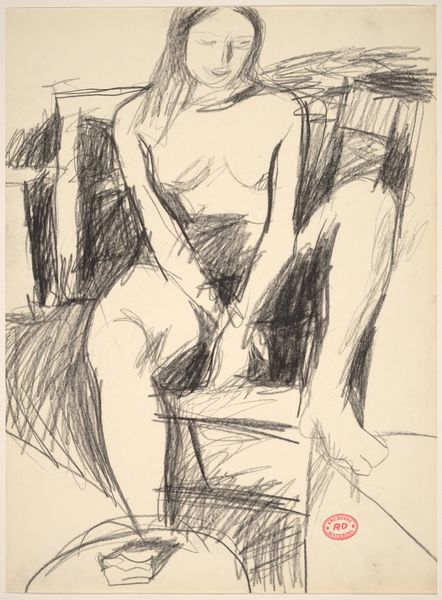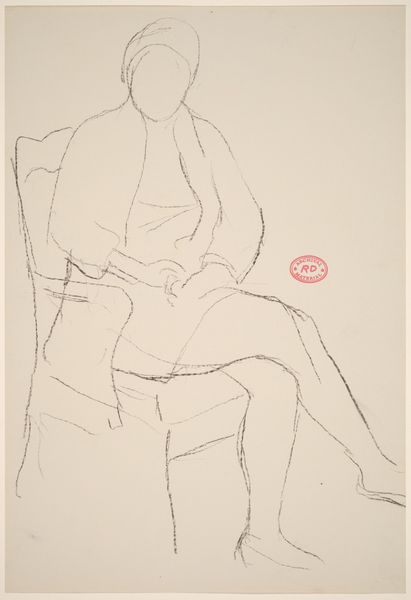
drawing, paper, pencil, chalk
#
portrait
#
17_20th-century
#
drawing
#
pencil sketch
#
figuration
#
paper
#
pencil
#
chalk
#
portrait drawing
#
academic-art
#
nude
Copyright: Public Domain
Curator: Before us is a pencil and chalk drawing by Charles Despiau titled "Weiblicher Akt in Vorderansicht, auf antikem Stuhl sitzend" or "Female Nude in Front View, Sitting on an Antique Chair." It is currently located here at the Städel Museum. Editor: It strikes me as almost melancholic. The figure is rendered in such soft, muted tones, there's a vulnerability about her. The unfinished quality, especially in the facial features, adds to that feeling. Curator: The academic style certainly situates it within a particular tradition of figure drawing, emphasizing form and classical ideals. Despiau was known for his sculptures, and this drawing seems like a study in preparation for a three-dimensional work, focusing on the interplay of light and shadow on the body. But, tell me more about why it seems melancholic to you. Editor: Well, look at her posture. She’s seated, relaxed, but not necessarily at ease. There is a sort of resignation, like she is bearing the weight of being the observed object. Is it a powerful image? Absolutely. But who benefits from that power dynamic and how does her vulnerability as a subject intersect with art historical convention? Curator: That’s a valid point. Nudes, throughout art history, have often served as vehicles for male gaze and power dynamics, certainly. I would push back slightly though because this drawing feels almost…clinical. Like an exercise in anatomy. However, you can see a softening of the form which perhaps could challenge that perspective. Editor: Exactly, while acknowledging its roots in academic tradition we can also have a very important conversation. By viewing and analyzing works such as this, we can ask critical questions. How do gender, race, class intersect within artistic practices, challenging traditional art historical narratives. The softness definitely lends a different, vulnerable interpretation, I feel. Curator: Agreed. Despiau’s technique is superb; the subtle gradations in tone create a beautiful sense of depth and volume. It's also intriguing that he placed his subject on an antique chair, grounding it in art historical traditions of portraiture. Editor: So, this drawing then, encapsulates a complexity. It stands as an example of technical skill, artistic historical framework, yet it allows critical discourse regarding its own potential participation in historically skewed paradigms. Curator: Precisely. It's a conversation starter, not just a pretty picture. Editor: And a reminder that art, even seemingly straightforward academic studies, can be powerful tools for social commentary.
Comments
No comments
Be the first to comment and join the conversation on the ultimate creative platform.
